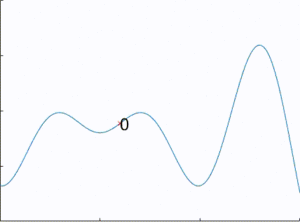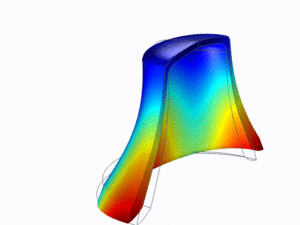| Lecturer (assistant) | |
|---|---|
| Language of instruction | German |
| Dates | See TUMonline |
Content

A brief presentation concerning the fundamentals of vibroacoustics, modelling of systems using the commercial finite element software COMSOL multiphysics and general optimization schemes will be given at the beginning of the course. The methodological framework for the optimization of the sound radiation of a vibroacoustic system will be developed with respect to the comparably simple system of a beam-like structure. The single steps covered are the identification of variables to be optimized, the parametrization of the system as well as the implementation of an optimization algorithm in MATLAB.
The methodology is extended and applied by the students to a model of a self-chosen bell. The aim is to numerically optimize the radiated sound of the bell. In a final step, the actual sound of the corresponding bell should approximately be reproduced by the numerically evaluated results (reauralization). The numerical analyses during the course are extended by experimental measurements of the bell of St. Ursula's church during an excursion.

- … understand and successfully apply common numerical optimization algorithms
- … generate and parametrize numerical models using the commercial finite element software COMSOL Multiphysics and to control the numerical analyses via the MATLAB LiveLink
- … understand the relation between structural vibration and their sound radiation behavior
- … take actions for optimizing the radiated sound of structures and to evaluate their efficiency
Organizational Matters
Practical training dates:
- Brief introduction into vibroacoustics, its corresponding state variables and bells by means of a presentation by the course supervisor
- Introduction to the commercial finite element software COMSOL Multiphysics and its control via the MATLAB LiveLink and an additional introduction into common optimization algorithms in terms of an interactive live-demonstration
- Extension of the introductorily built framework in order to optimize the sound of a self-chosen bell geometry in groups of up to two students
- Excursion to the bell tower of the St. Ursula's church and experimental measurement of the tower bell’s sound
Examination:
- Presentation (15 minutes) and subsequent discussion (approx. 10 minutes)
Recommended Previous Knowledge
- An introduction to Vibroacoustics
- Numerical Methods for Engineers or Finite Elements
The above mentioned recommended previous knowledge is not obligatory to successfully complete this course. If you are indecisive about your participation in this course, please contact the responsible course assistant.